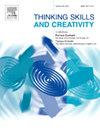是什么让博物馆产品富有创意?从消费者的角度分析美学、情感和文化维度
IF 4.5
2区 教育学
Q1 Social Sciences
引用次数: 0
摘要
博物馆文化创意产品旨在通过设计促进遗产,但往往面临创意同质化的问题。本研究回顾了MPCM模型的形成结构,该模型将创造力概念化为包括新颖性、实用性、情感、美学和文化价值。使用专家筛选的产品样本(N = 9)和消费者调查数据(N = 545),我们采用PLS-SEM来检验二阶形成模型。结果表明,只有有用性和文化价值观对创造力有显著的预测作用,而情感、新颖性和美学虽然具有较高的内在信度,但表现出多重共线性和不显著性。这些发现挑战了现有形成模型的附加逻辑,并表明消费者在评估mccp时依赖于整体印象。我们提出了一个双路径评估框架,区分感知主导(情感和审美)和认知主导(功能和文化)过程,为评估mccp提供理论完善和实践指导。本文章由计算机程序翻译,如有差异,请以英文原文为准。
What makes a museum product creative? Unpacking aesthetic, emotional, and cultural dimensions from the consumer perspective
Museum cultural and creative products (MCCPs) aim to promote heritage through design, yet they often face homogenization of creativity. This study revisits the formative structure of the MPCM model, which conceptualizes creativity as comprising Novelty, Usefulness, Affect, Aesthetics, and cultural values. Using expert-screened product samples (N = 9) and consumer survey data (N = 545), we employed PLS-SEM to test a second-order formative model. Results show that only Usefulness and Cultural Values significantly predict creativity, while Affect, Novelty, and Aesthetics, despite high internal reliability, exhibit multicollinearity and non-significance. These findings challenge the additive logic of existing formative models and suggest that consumers rely on holistic impressions in evaluating MCCPs. We propose a dual-path evaluative framework that distinguishes between perception-dominant (emotional and aesthetic) and cognition-dominant (functional and cultural) processes, offering both theoretical refinement and practical guidance for assessing MCCPs.
求助全文
通过发布文献求助,成功后即可免费获取论文全文。
去求助
来源期刊

Thinking Skills and Creativity
EDUCATION & EDUCATIONAL RESEARCH-
CiteScore
6.40
自引率
16.20%
发文量
172
审稿时长
76 days
期刊介绍:
Thinking Skills and Creativity is a new journal providing a peer-reviewed forum for communication and debate for the community of researchers interested in teaching for thinking and creativity. Papers may represent a variety of theoretical perspectives and methodological approaches and may relate to any age level in a diversity of settings: formal and informal, education and work-based.
 求助内容:
求助内容: 应助结果提醒方式:
应助结果提醒方式:


